World Economic Forum / Wikimedia Commons / CC-BY-SA-3.0 / GFDL
1 – Brexit
Brexit (British Exit) is the withdrawal of the United Kingdom from the European Union. On 23 June 2016, 51.9% of voters in the referendum supported leaving the EU.
The UK joined the European Communities in 1973 under the Conservative government, with continued membership endorsed by a referendum in 1975.
During the 1970s and 1980s, withdrawal from the EC was advocated mainly by the political left, with the Labour Party’s 1983 election manifesto advocating full withdrawal.
In 1987, the Single European Act established the single European market and European Political Cooperation. From the 1990s, opposition to further European integration came mainly from the right.
In 1992, the Maastricht Treaty created the European Union, the single market, and guaranteed the four basic freedoms (the free movement of goods, services, capital and people around the EU).
When the Treaty was brought before Parliament, there were divisions within the Conservative Party, leading to a rebellion and the formation of the UK Independence Party (UKIP) in 1993.
During the 2015 general election campaign, Conservative Prime Minister, David Cameron, pledged to hold a new referendum. He, subsequently, announced the referendum for 23 June 2016, following pressure from the Eurosceptic wing of his party.
Cameron campaigned to remain and resigned after the result, before being succeeded by Theresa May. Less than a year later, May called a snap general election, which backfired and lost her overall majority.
On 29 March 2017, the British Government invoked Article 50 of the Treaty on European Union, starting a two-year withdrawal process, concluding with the UK’s exit on 29 March 2019.
Theresa May announced the government’s intention not to seek permanent membership of the European single market or the EU customs union after leaving the EU.
Negotiations with the EU officially started in June 2017. In November 2018, the UK and EU published a draft Withdrawal Agreement, after negotiations over the previous 18 months.
However, as the agreement failed to pass through the House of Commons, Theresa May was forced to seek an extension to the withdrawal period on 14 March 2019.
That deadline has since been extended to 31 October 2019.
2 – Donald Trump is Elected U.S. President in a Huge Upset
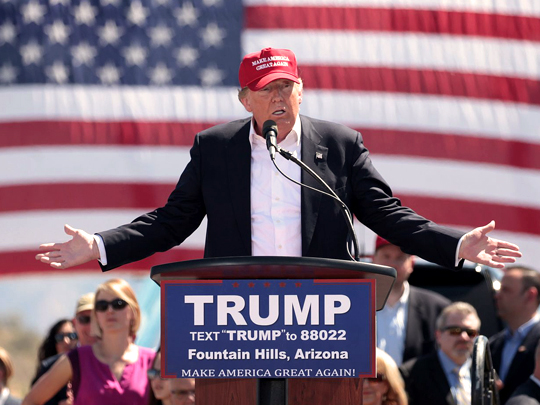
On 8 November 2016, the Republican ticket of Donald Trump and Indiana Governor Mike Pence won the U.S. presidential election against the Democratic ticket of Hillary Clinton and Virginia Senator Tim Kaine.
Trump’s presidential campaign was launched on 16 June 2015 at Trump Tower in New York City. His populist positions in opposition to illegal immigration and various trade agreements earned him considerable support, especially among white, male voters.
Numerous controversial remarks and his disdain for political correctness helped his campaign gain extensive coverage from the mainstream media and on social media.
Trump was accused of inciting violence at his rallies, with a number of incidents of violence between his supporters and protesters, and mistreatment of journalists.
Among his most polarizing proposals were the deportation of all illegal immigrants, the construction of a larger wall on the Mexico–United States border at Mexican expense, and a temporary ban on foreign Muslims entering the U.S.
Opposition to Trump grew among Republicans, who viewed him as doing irrevocable damage to the party. Republican congress-members were criticized for not condemning Trump’s actions, instead, prioritizing party loyalty and not alienating Trump supporters.
However, Trump’s populist, nationalist campaign, which promised to “Make America Great Again”, struck a chord with millions of Americans, with many feeling they had been neglected by career politicians in Washington D.C. and wanted to break the system.
Hilary Clinton held the lead in nearly every pre-election nationwide poll and in most swing state polls, making Trump’s victory one of the greatest political upsets in U.S. history.
In the end, Trump received 304 electoral votes to Clinton’s 227 but lost the popular vote by 2.87 million votes. He is the fifth person in U.S. history to become president while losing the nationwide popular vote.
Trump also broke the mold by becoming the first president without having any prior public service or military experience and was the oldest president at their inauguration.
On 6 January 2017, the United States government’s intelligence agencies concluded that the Russian government had interfered in the 2016 U.S. elections.
A joint United States Intelligence Community review stated with high confidence that Russian President Vladimir Putin had ordered an influence campaign to undermine public faith in the U.S. democratic process, and to harm Hilary Clinton’s electability.
Investigations into Russian interference and allegations of collusion were started by the FBI, the Senate Intelligence Committee, and the House Intelligence Committee.
In May 2017, former FBI director Robert Mueller was appointed as Special Counsel by Acting Attorney General Rod Rosenstein to oversee the investigation.
President Trump has repeatedly rejected the conclusions of the U.S. intelligence agencies.
3 – Black Lives Matter
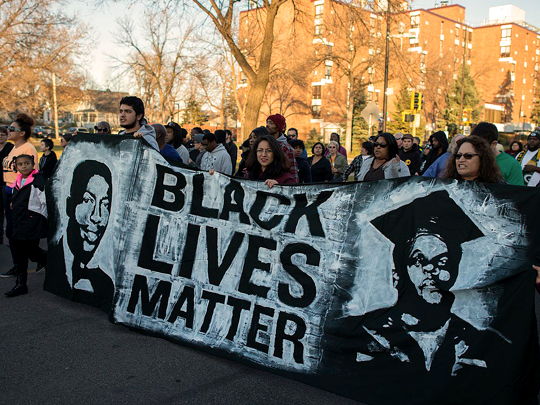
Black Lives Matter was an activist movement, which originated to campaign against violence and systemic racism towards African Americans in the United States.
In 2013, the movement began with the use of the hashtag #BlackLivesMatter on social media after police officer George Zimmerman was acquitted in the shooting death of African-American teenager Trayvon Martin.
Black Lives Matter grew into a nationally recognized movement during 2014, with street demonstrations following the deaths of Michael Brown in Ferguson, Missouri, and Eric Garner in New York City, at the hands of police officers.
There have been numerous other demonstrations following the deaths of African Americans by police actions or while in police custody.
The originators of the hashtag, Alicia Garza, Patrisse Cullors, and Opal Tometi, expanded their project into a national network of over 30 local chapters between 2014 and 2016.
In response to the movement, the phrase “All Lives Matter” sprang up, but has been criticized for dismissing or misunderstanding the message of “Black Lives Matter”.
After two police officers were shot in Ferguson, the hashtag #BlueLivesMatter was created in support of police officers. Meanwhile, some black civil rights leaders have disagreed with the confrontational tactics used by Black Lives Matter activists.
4 – The Brussels Bombing
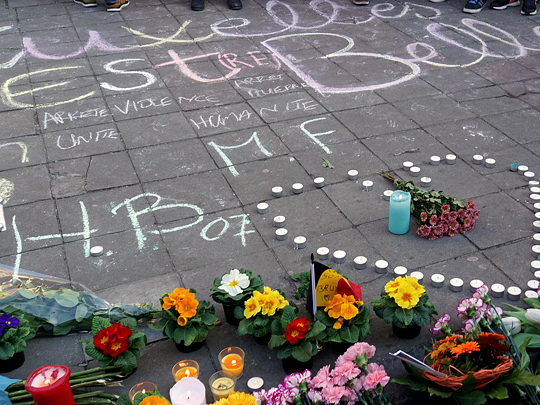
On the morning of 22 March 2016, there were three coordinated suicide bombings in Belgium, with two at Brussels Airport and one at Maalbeek metro station in central Brussels.
In total, thirty-two civilians were killed, along with the three bombers, while more than 300 people were injured. Another bomb was found during a search of the airport.
In the aftermath of the attacks, ISIS claimed responsibility for them, with the perpetrators belonging to a terrorist cell that had also been involved in the November 2015 attacks in Paris.
The Brussels bombings happened shortly after a series of police raids had targeted the group.
The bombings were the deadliest act of terrorism in Belgium’s history. The Belgian government declared three days of national mourning.
Belgium was a participant in the military intervention against ISIS, during the Iraqi Civil War. In November 2015, Iraq warned that ISIS leader Abu Bakr al-Baghdadi had ordered retaliatory attacks on countries involved in the coalition against ISIS.
5 – The Orlando Shooting
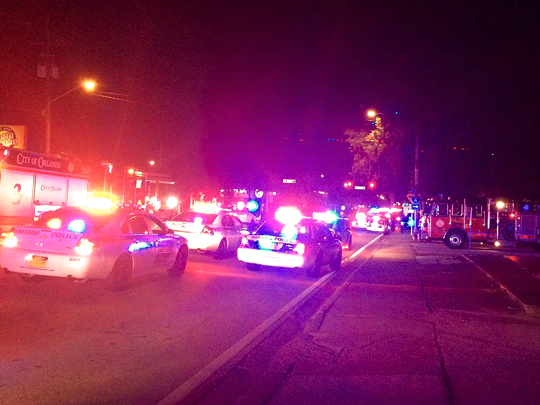
On 12 June 2016, Omar Mateen, a 29-year-old security guard, killed 49 people and wounded 53 others in a mass shooting inside Pulse nightclub in Orlando, Florida.
Following a three-hour standoff, Orlando Police officers shot and killed Mateen, freeing the final thirty hostages, having rescued many of the survivors while a negotiator engaged with Mateen.
In a 9-1-1 call made shortly after the shooting began, Mateen swore allegiance to the leader of the Islamic State, Abu Bakr al-Baghdadi. He claimed the killing of ISIS leader Abu Waheeb in Iraq the previous month had triggered the shooting.
During the subsequent standoff, Mateen told a negotiator he was there because of the American-led interventions in Iraq and in Syria, and that the negotiator should tell the U.S. to stop the bombing.
Pulse was a gay nightclub, which had been hosting a “Latin Night”. There were around 320 people in the club when last call drinks were being served, just as Mateen opened fire. Most of the victims were Hispanic.
It is the deadliest incident of violence against LGBT people in U.S. history and is the deadliest terrorist attack in the U.S. since the September 11 attacks in 2001.
At the time, it was the deadliest mass shooting by a single shooter in U.S. history, before being surpassed by the Las Vegas shooting in 2017.
6 – Bastille Day Attacks
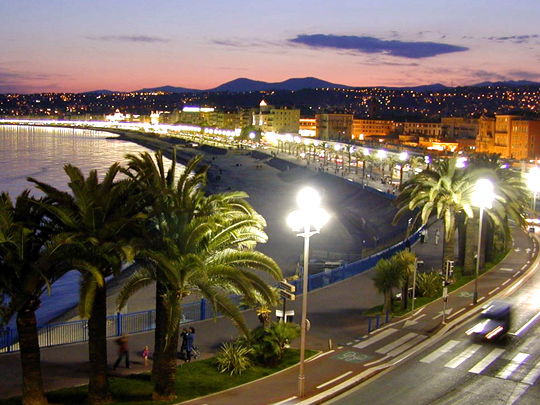
At around 10:30 pm on 14 July 2016, a 19-tonne cargo truck was deliberately driven into crowds of people celebrating Bastille Day on the Promenade des Anglais in Nice, France.
The attack, which lasted approximately five minutes, began with the truck, traveling at close to 90 kph (56 mph), mounting the pavement before hitting numerous bystanders.
After breaking through a barrier to the pedestrianized zone, the truck zigzagged and targeted the crowd milling about on the pavement and in the three traffic lanes on the seaward side of the Promenade.
The driver fired several shots at police, as a number of civilians and police gave chase to the vehicle and attempted to stop it or slow it down.
The attack took place over a distance of 1.7 kilometers (1.1 miles) and ended with police exchanging gunfire with the driver, Mohamed Lahouaiej-Bouhlel, who was shot and killed.
The incident resulted in the deaths of 86 people and injured over 450 others. The Islamic State later claimed responsibility for the attack.
The following day, French President François Hollande called the attack an act of Islamic terrorism. He extended the state of emergency for an initial three months after it had been declared following the Paris attacks on 13 November 2015.
By the beginning of August, six suspects had been taken into custody on charges of “criminal terrorist conspiracy.” Three of the suspects were also charged for complicity in murder in relation to a terrorist enterprise.
On 16 December, another three suspects were charged, having been allegedly involved in the supply of illegal weapons to Lahouaiej-Bouhlel.
7 – Colombian Peace Treaty
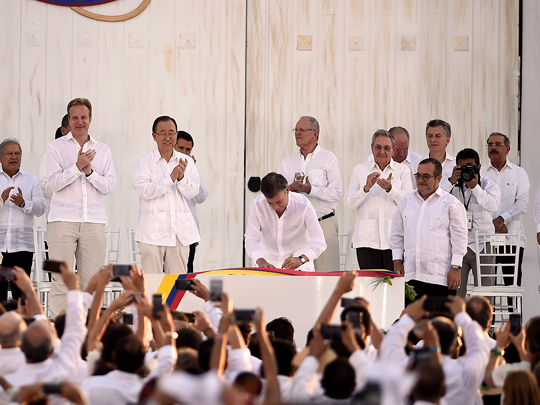
The Colombian peace process took place between the Colombian government of President Juan Manuel Santos and the Revolutionary Armed Forces of Colombia (FARC) to bring an end to the Colombian conflict.
FARC was an anti-imperialist guerrilla movement, involved in a continuing armed conflict with the Colombian government from 1964 to 2017. They funded their operations by kidnap and ransom, and the production and distribution of illegal drugs.
Negotiations began in September 2012, taking place mainly in Havana, Cuba. A final agreement to end the conflict was announced by negotiators on 24 August 2016.
However, a referendum to ratify the deal on 2 October 2016 was unsuccessful after 50.2% of voters voted against the agreement.
The Colombian government and FARC then signed a revised peace deal on 24 November, sending it to Congress for ratification instead of conducting a second referendum.
Both houses of Congress ratified the revised peace agreement on 29-30 November 2016, marking a historic an end to the conflict.
On 27 June 2017, FARC ceased to be an armed group, disarming itself and handing over its weapons to the United Nations. A month later, FARC announced its reformation as a legal political party, in accordance with the terms of the peace deal.
However, up to 2,500 FARC dissidents continue to take on FARC’s original doctrine and continue with drug trafficking, at a much smaller scale than before.
8 – Hurricane Matthew causes a humanitarian crisis in the U.S.
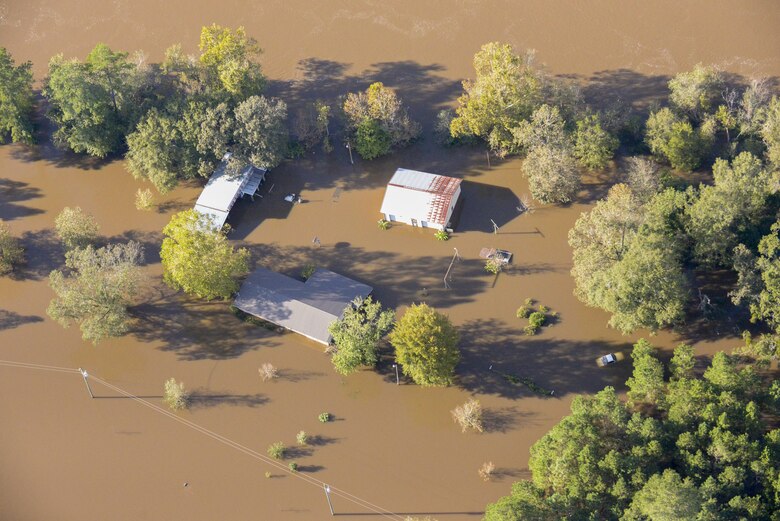
Hurricane Matthew was a Category 5 Atlantic hurricane, which devastated Haiti, causing a humanitarian crisis, as well as widespread damage in the southeastern United States.
It also caused extensive damage in the Caribbean, on islands such as the Greater Antilles, the Bahamas, Cuba, and Jamaica.
The most significant impacts were felt in Haiti, with an estimated $2.8 billion in damage and over 545 deaths.
A combination of flooding and high winds disrupted telecommunications and destroyed around 200,000 homes, leaving 1.4 million people in need of humanitarian aid.
Near-Total destruction of crops in the Grand’Anse and Sud departments left the impoverished population without a source of food.
In Cuba, a bridge spanning the Toa river was destroyed, leaving several communities isolated as a result. Total damages were estimated to have amounted to over $2.5 billion.
In the southeastern United States, several states declared states of emergencies for either entire states or coastal counties, with widespread evacuations ordered along the coast due to the predicted high wind speeds and flooding.
In Florida, over 1 million lost power as the storm passed to the east, with nearly 500,000 losing power in Georgia and South Carolina.
The damage was mainly confined to coastal Florida and Georgia, but torrential rains in the Carolinas and Virginia also caused widespread flooding.
9 – Chapecoense Plane Crash
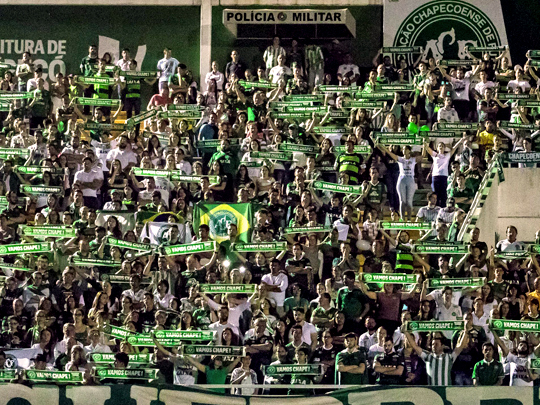
LaMia Flight 2933 was a charter flight that crashed near Medellín, Colombia, killing 71 of the 77 people on board, on 28 November 2016.
The plane was transporting the Brazilian Chapecoense football squad and their entourage from Santa Cruz de la Sierra, Bolivia, to Medellín, to play the first leg of the 2016 Copa Sudamericana Final.
Only 3 of the 22 Chapecoense players on board, one of the four crew members, and two other passengers survived with injuries of varying severity.
Bolivian Air authorities say they rejected the crews’ plan of a direct flight from Santa Cruz to Medellin, altering the flight plan to include a refueling stop in Bogotá. However, the refueling stop in Bogotá was never made.
On approach, Medellín air traffic controllers gave another aircraft priority to land, while the LaMia’s crew was instructed to enter a holding pattern. During the last 15 minutes of its flight, the plane completed two laps of this holding pattern, approx. 54 nautical miles.
At 21:49, the LaMia crew requested priority for landing due to unspecified fuel problems, but were told to expect an approach clearance in “approximately seven minutes”.
Minutes later, they declared a fuel emergency and requested immediate descent clearance. Nearing the end of its second lap of the holding pattern, the two engines on the right-wing flamed out due to fuel exhaustion.
Two minutes later, the engines on the left-wing flamed out, at which point the flight data recorder stopped operating. The aircraft hit the crest of a mountain ridge, known as Cerro Gordo, at 21:59 local time, about eight miles from its destination.
Colombian Air Force helicopters were initially unable to get to the site because of heavy fog, meaning it was two hours before the first aid workers arrived at the crash site. It was not until around 02:00 that the first survivor reached a hospital.
In light of the tragedy, the other finalists, Atlético Nacional of Colombia, requested that CONMEBOL award the title to Chapecoense, their first continental title.
The official report from Colombia’s civil aviation agency, Aerocivil, found the causes of the crash to be fuel exhaustion, due to an inappropriate flight plan by the airline.
It also reported poor decision making by the pilot as the situation worsened, including a failure to declare an emergency after fuel levels became critically low. He also failed to inform Medellin air traffic control that a priority landing was required.
10 – The Paris Agreement
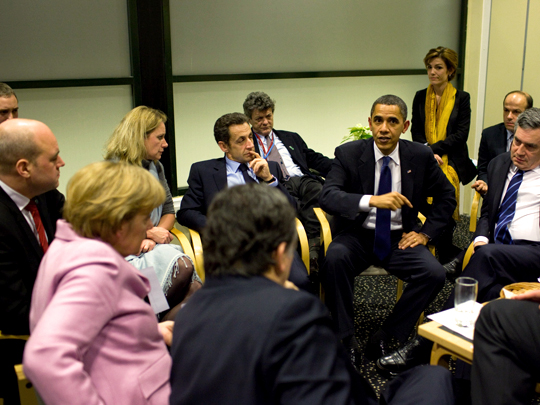
The Paris Agreement is an agreement within the United Nations Framework Convention on Climate Change (UNFCC), dealing with greenhouse-gas-emissions mitigation, adaptation, and finance.
It was opened for signature on 22 April 2016 (Earth Day) at a ceremony in New York. The agreement went into effect on 4 November 2016.
The agreement’s language was negotiated by representatives of 196 state parties in Le Bourget, near Paris, France, and adopted on 12 December 2015. As of July 2019, 195 UNFCCC members have signed the agreement, and 186 have become a party to it.
The Paris Agreement’s long-term goal is to keep the increase in global average temperature to well below 2 °C above pre-industrial levels. This would substantially reduce the risks and effects of climate change.
Under the Paris Agreement, each country must determine, plan, and regularly report on the contribution that it undertakes to mitigate global warming. No mechanism forces a country to set a specific target by a specific date.
In June 2017, U.S. President Donald Trump announced his intention to withdraw the United States from the agreement. Under the agreement, the earliest effective date of withdrawal for the U.S. is November 2020.
However, changes in the United States policy that are contrary to the Paris Agreement have already been put in place.
In July 2017, French Environment Minister Nicolas Hulot announced a plan to ban all petrol and diesel vehicles in France by 2040. He also stated France would no longer use coal to produce electricity after 2022.
To help reach the agreement’s emission targets, Norway will ban the sale of petrol and diesel-powered cars by 2025, while the Netherlands will do the same by 2030.
The Paris deal is the world’s first comprehensive climate agreement.
